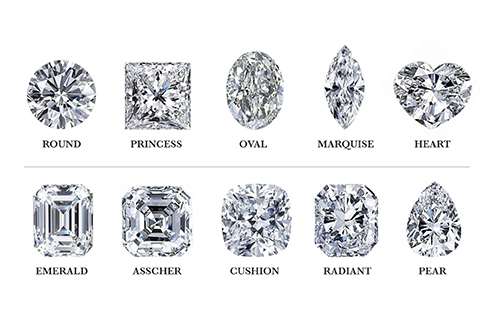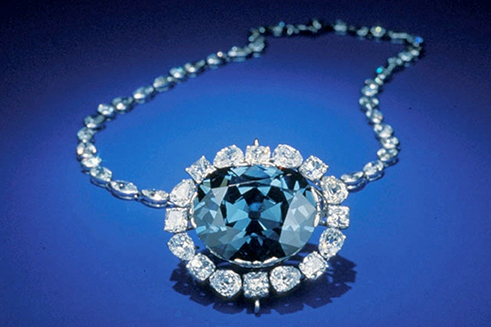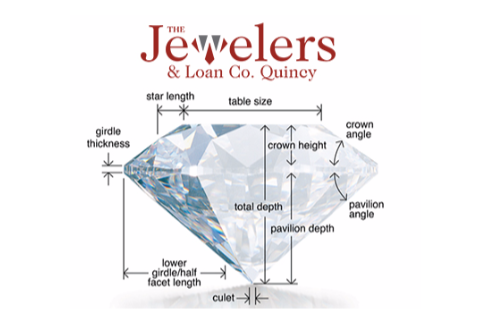Diamond Exchange Near Boston, MA
The Jewelers & Loan Co. Quincy, MA is The Diamond Exchange for Cash
For hundreds of years, diamonds have been one of the most valued precious natural stones in the world. We buy diamonds for cash exchange here at 509 Beale St. in Quincy. There is no denying the brilliance, beauty or rarity of these stones-diamonds, which is why many will pay hundreds of thousands of dollars for these beauties. After all—a diamond truly is forever.
Whether you are interested in selling loose diamonds, want to pawn an old diamond engagement ring from a previous relationship, or looking to make custom made diamond jewelry from our Quincy, MA store, here at The Jewelers & Loan Co. we want to make sure that every person considering buying, selling, or pawning diamonds is fully educated on proper diamond selling and buying. There are a lot of characteristics to focus on, and it can be overwhelming, but if you have the right mindset and want to spend your money in the most efficient way to ensure you have a higher resale value if you upgrade down the line, sell due to an emergency, or even pawn or borrow against your diamond, it’s important to purchase the diamond with the correct mix of attributes.


An introduction to the diamond cash exchange.
The world’s fascination with diamonds has been going on for centuries. But what makes diamonds so special? Some may like the look. Others may value the rarity. Certain consumers may value their association with commitment and love. Some may even like the status that comes with them, or perhaps the way in which they are formed in nature. There are so many reasons to love diamonds and so many factors that influence people’s love for these stones. There are also many factors that make diamonds valuable, especially today.
Before you start diving into the specifics of what makes a diamond a diamond and what makes these stones unique, there are a few different key terms that can help you through your diamond education if you’re looking to custom make an engagement ring, buy diamond earrings, or pawn borrow on your diamond. BlueNile and their private equity partnership has transformed the diamond buying experience and has affected a lot of local jewelers. Now, more than ever, consumers are able to price shop based on the information provided online. Although a great business, buying diamonds solely based on the provided certificates is not a good idea. You should buy diamonds based on the stone. GIA Certificates, which are also called diamond reports, are issued by an accredited independent gemological laboratory. In addition to the diamond’s carat weight and measurements, a certificate includes grades for the diamond’s cut, color, and clarity. These certificates are very vital to diamond pricing; however, you want to buy the stone, not the certificate! When you see a diamond in person, you are actually experiencing the life of the stone and how the facets attract or don’t attract light. There is nothing quite like seeing how a diamond looks up close and personal. With a certificate, the in-person visual is totally discounted. For example, when a stone is so-called “milky” the GIA certificate will not report this. One could liken the issue of “milkiness” to an ice cube. You may ask yourself, how clear is the ice cube with respect to its composition? Are there streaks or cloudiness? There are many factors to consider when looking at diamonds, but diamond-philosophy, your loved one’s preferences, and long term objectives should be considered when making a purchase.
Below we have a list of the parts of the diamond that every person buying diamonds or selling diamonds should know. Here at The Jewelers & Loan Co of Quincy, Massachusetts, we know it can be overwhelming, so we won’t quiz you on this later. However, we do want to make sure you are educated on the different terms that you will not only hear our diamond engagement ring and diamond jewelry buyers use but other diamond buyers and diamond sellers in the business users as well. We respect Signet Jewelers, who owns Kay, Zale’s, Jared’s, & Piercing Pagoda along with other brands, but we would urge you to consider bringing your business to an experienced local jeweler or pawnbroker in your community, even if it’s not with us.
- Brilliance – The brilliance of a diamond is the brightness that is created when you look at the stone or the sparkle. It is created by a combination of the white light reflections from the surface of the diamond and the inside polished portion of the diamond.
- Certified Diamond – When you are dealing with a certified diamond it means it has undergone quality analysis by a gemological laboratory and has a lab report or certificate with it. If you have this diamond certification, bring it in with you to our shop. Typically, diamonds are certified by the Gemological Institute of America (GIA), AGSL (American Gem Society Laboratory), EGL (European Gemological Laboratory), IGI (International Grading Laboratory), Diamond Grading Report, Report Numbers, or a GIA Diamond Grading Report.
- Crown – The crown is the top part of the diamond above the girdle but below the flat top of the diamond. The crown goes around the outside of the stone (much like a crown shape).
- Cutlet – This is a small facet located at the bottom of a finished diamond.
- Facet – A flat, polished surface on a finished diamond.
- Fire – When you look at a diamond and see flashes of color inside the polished diamond, this is known as the fire.
- Girdle – This is the “setting edge” of your diamond or what you use in order to put it in prongs or a setting. It is a very narrow section of a finished diamond that creates a boundary between the crown and the pavilion.
- Pavilion – This is the lower part of a faceted diamond, located right below the girdle.
- Scintillation – When you move a diamond and see those little flashes of light when it moves, this is scintillation.
Now that you have a basic understanding of some of these terms, it is time to move on to perhaps the most important concept of diamond buying and diamond selling- the Four C’s.

